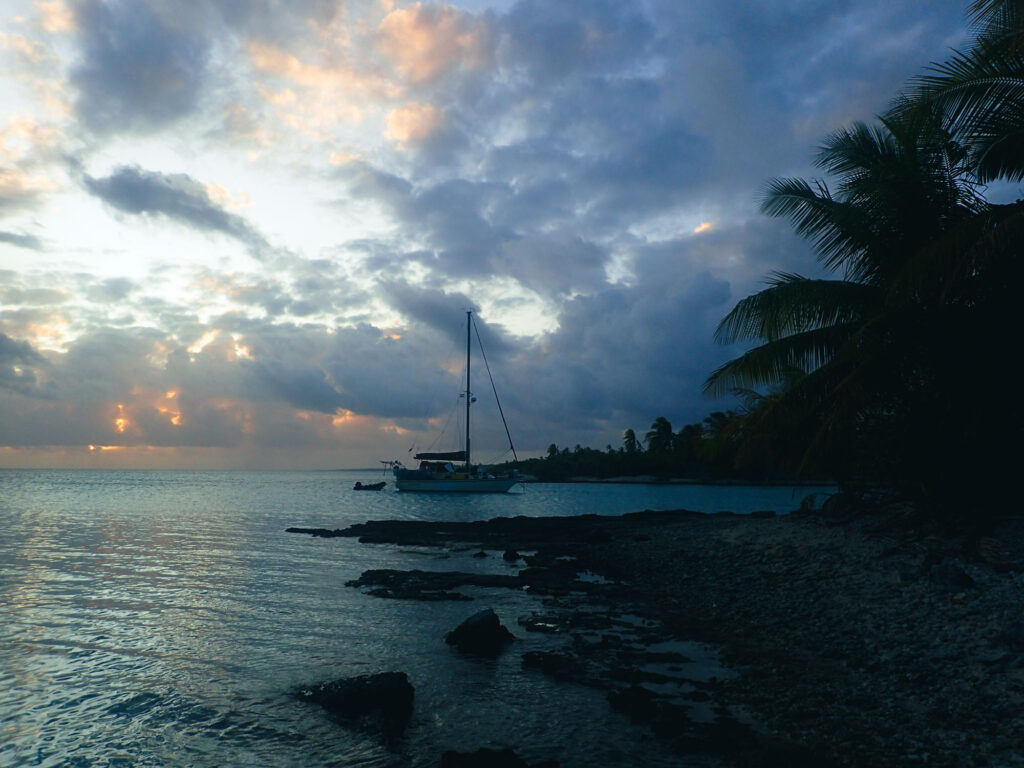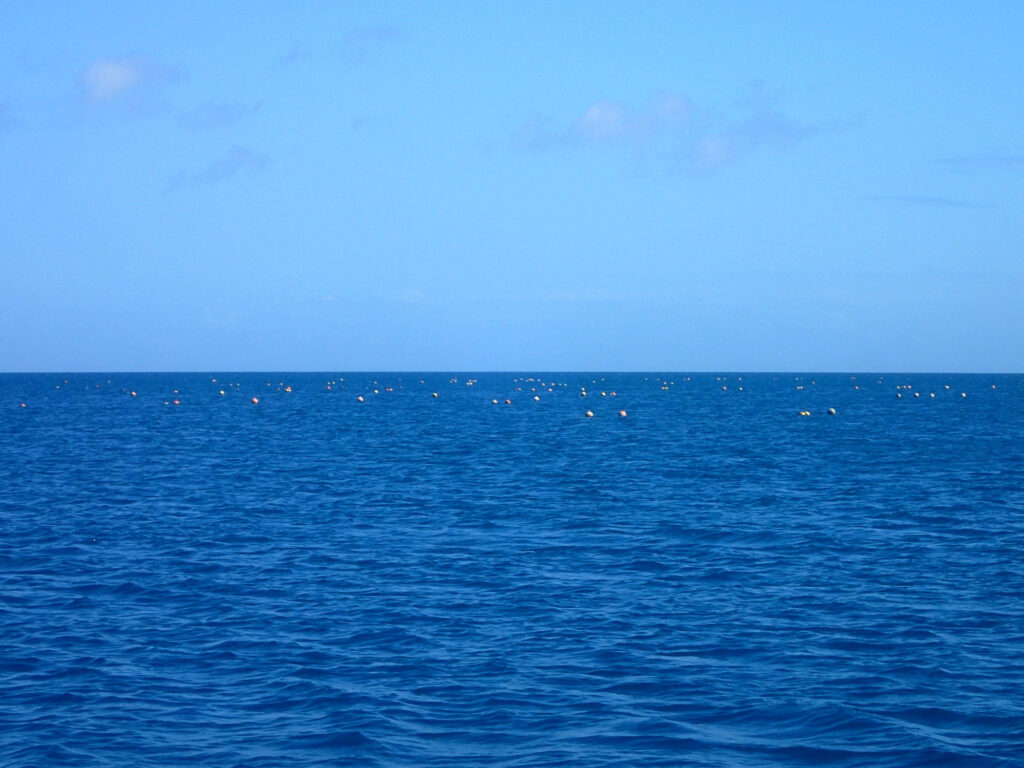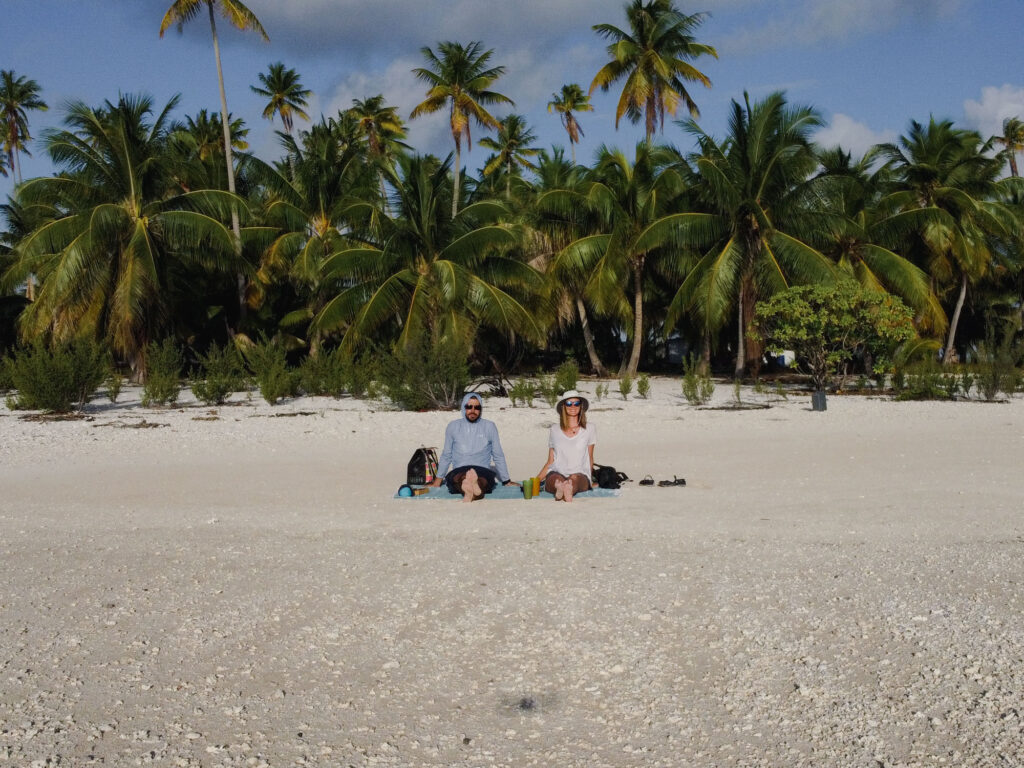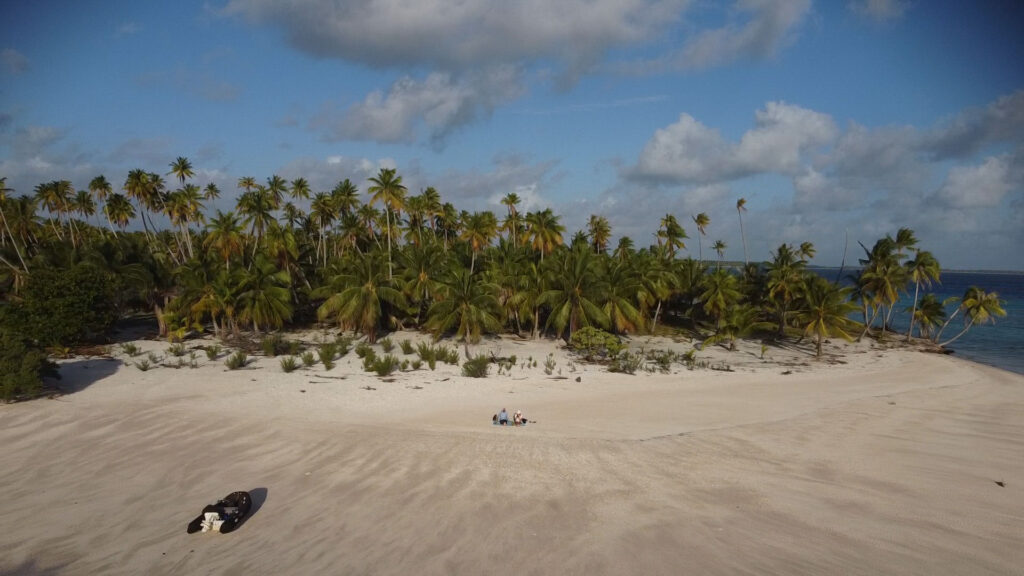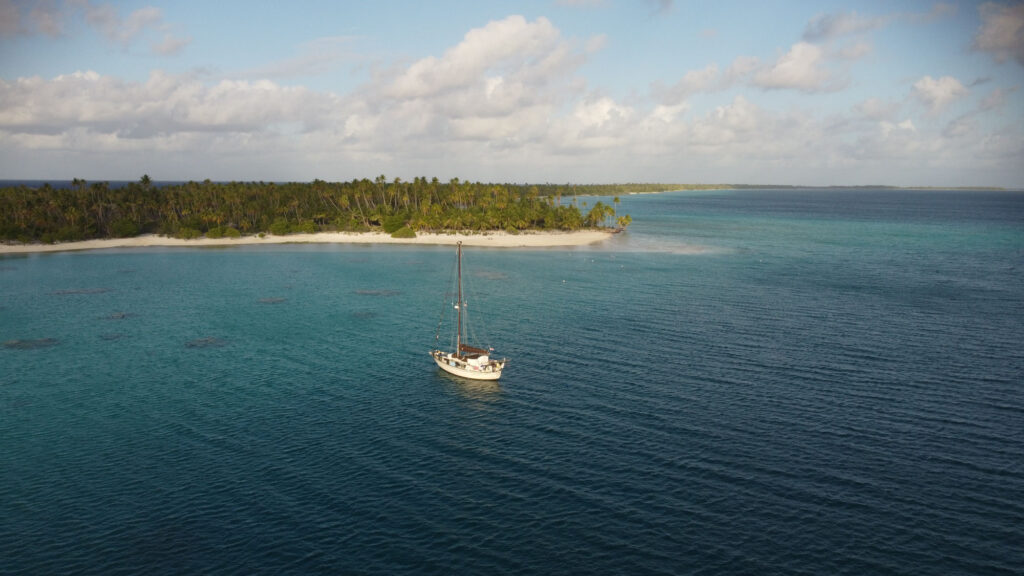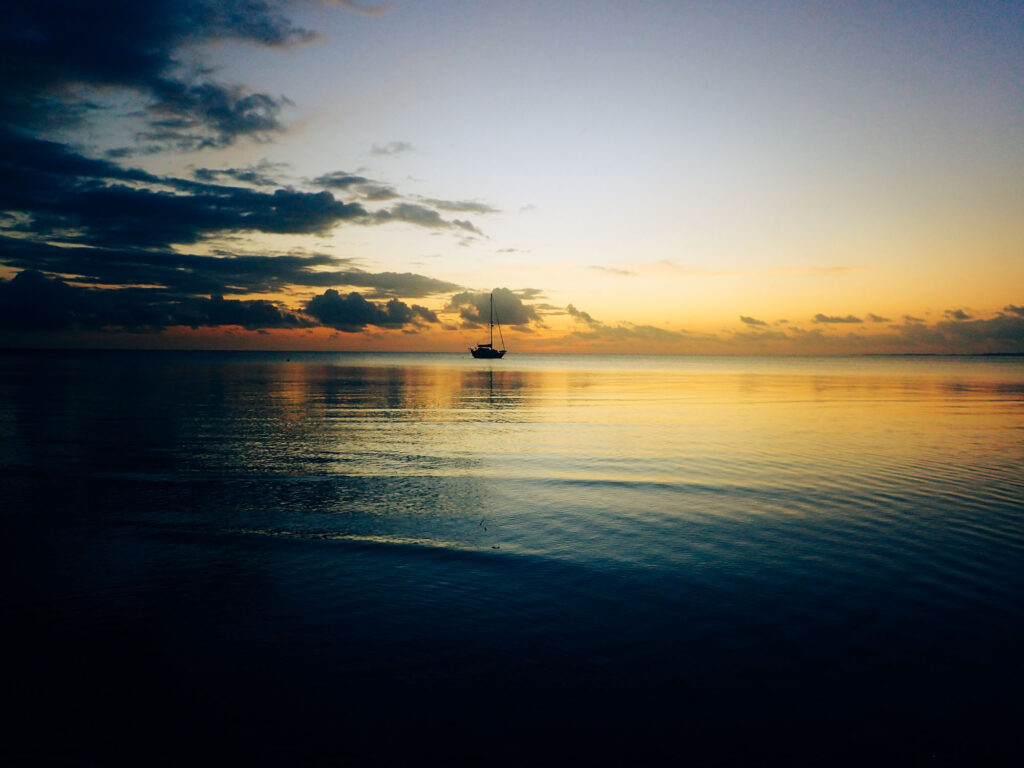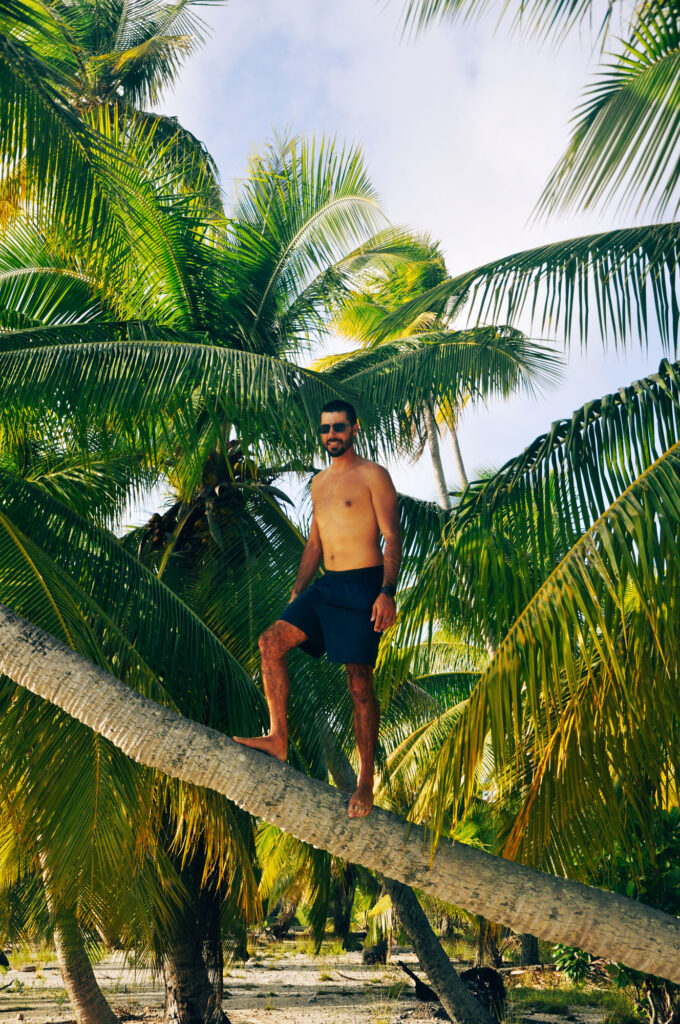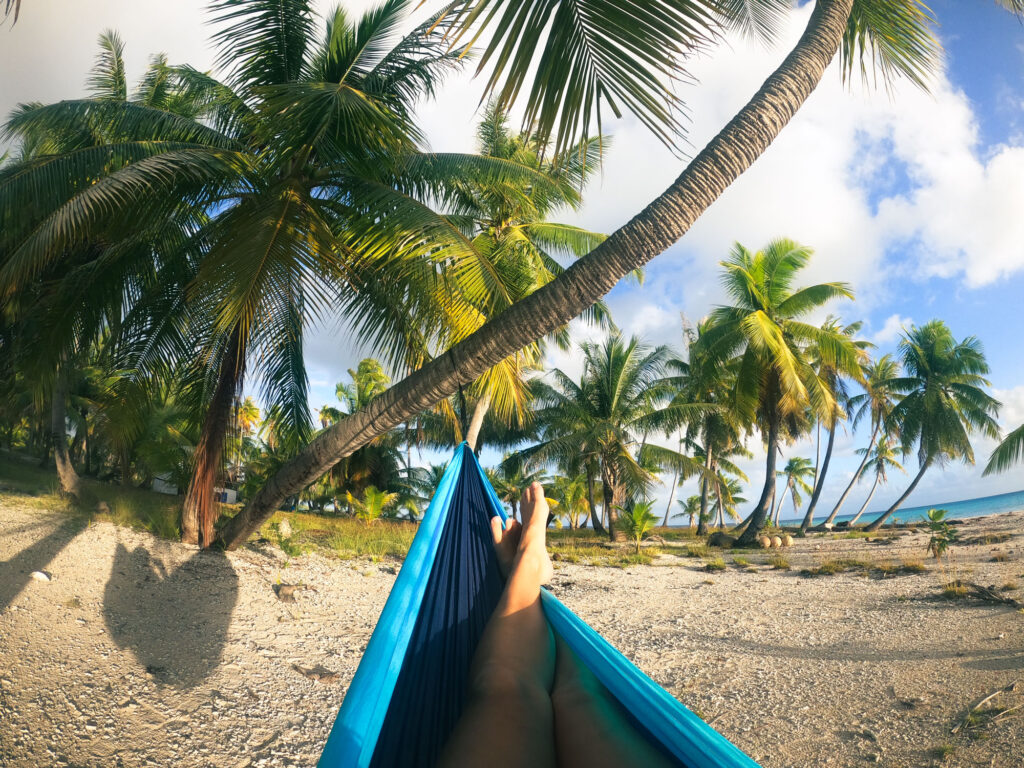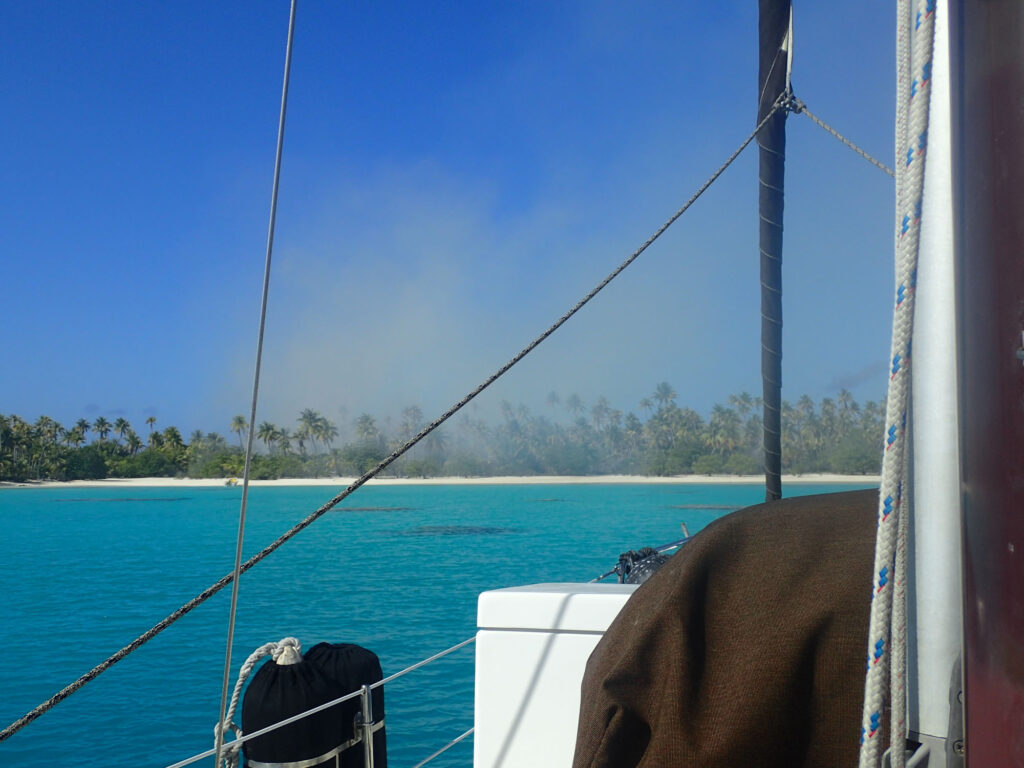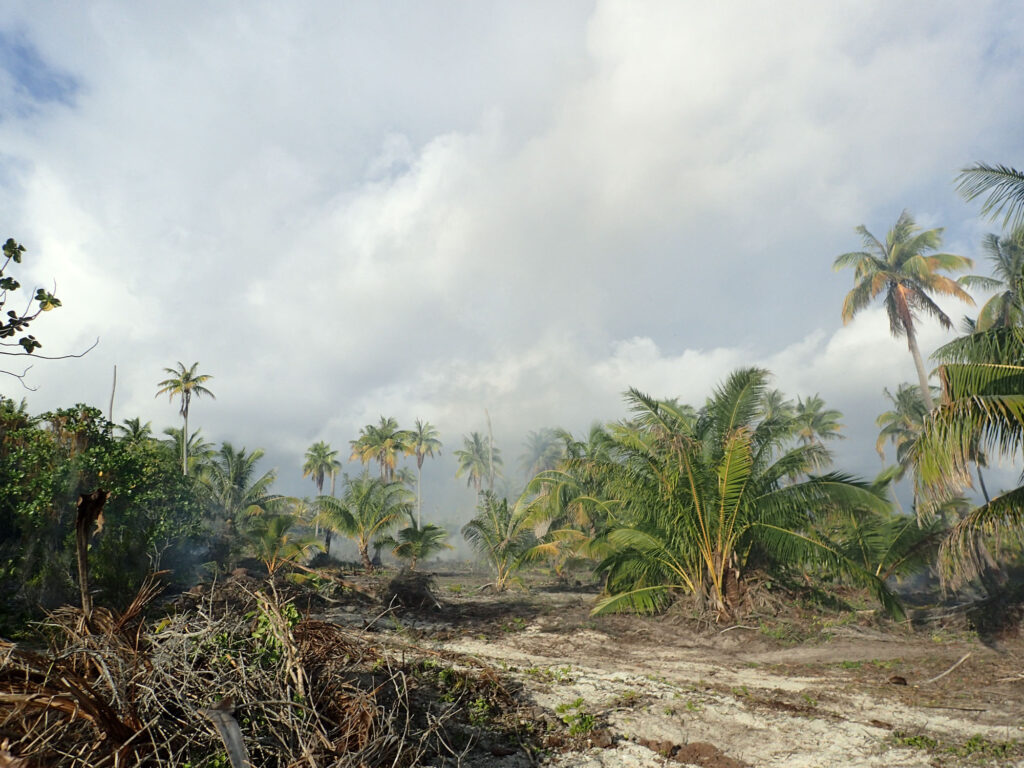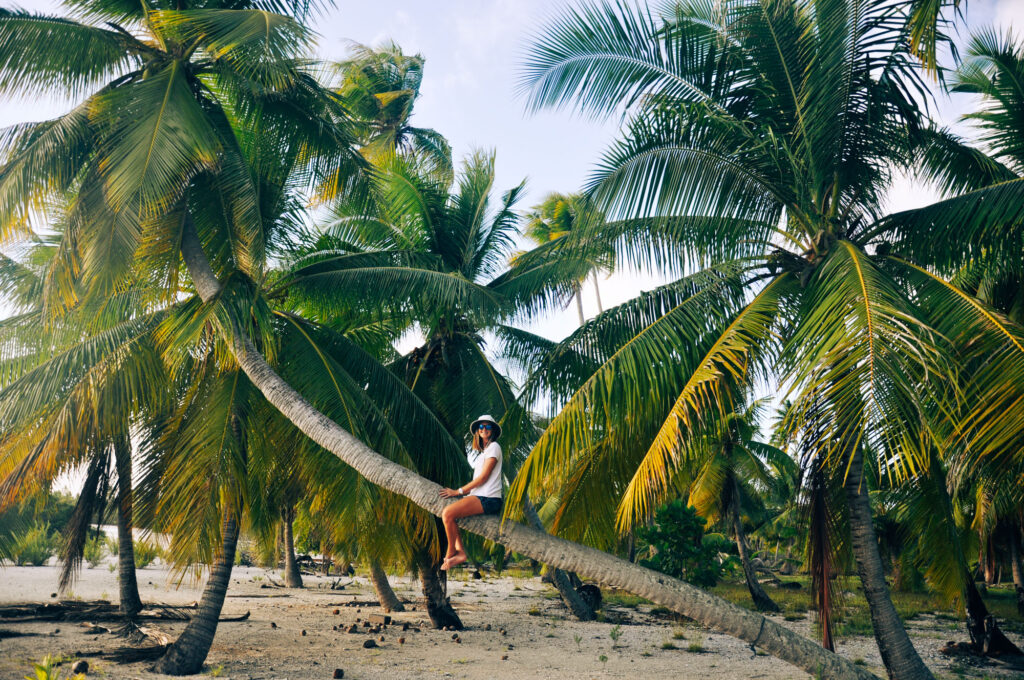After picking up groceries and fuel in the main town on Katiu, we headed out to a less populated part of the island. Since few, if any, cruisers go to this atoll, there weren’t any recommendations on anchorages or places to go. Eitan used some satellite imagery to pick out a couple of potential locations to visit. For some reason, one of these locations was a pearl farm dock. During our few weeks in the Tutmotus, we had seen a few pearl farms. They are normally buildings, or a series of buildings, where the workers come to stay for the week to harvest and open the shells to recover the pearls. They generally looks run down and abandoned except for the occasional person, dog, or chicken. I didn’t really understand Eitan’s obsession with wanting to pull up to this oyster farm dock, other than he seems to get a thrill out of taking his boat to places few others go to.
Considering we had less than six weeks scheduled in this beautiful paradise of atolls, I didn’t want to spend any of those nights tied to a dock next to some abandoned-looking buildings and then be told by the workers we couldn’t be there anyway. I convinced him to anchor around the corner in a tight little cove, then take the dinghy to go over to explore. It was more or less exactly what I had expected and we walked around without seeing anyone or anything other than some blacktip reef sharks circling the little marina they had constructed.
I was frustrated because we only had 3-month visas for French Polynesia and it constantly felt like the time was ticking down. I wanted to maximize our time in the most beautiful anchorages with the best snorkeling, but it was impossible to know where those were, especially when conditions and visibility are constantly changing. Any overly windy or cloudy days felt like that time had been stolen from us. If we had spent all day, or even a few hours, getting to a new anchorage that was mediocre, I felt robbed. However, in life, I suppose this is always true and time is the only non-renewable resource.
The next day we moved to a different anchorage that had a nice beach and some good diving potential, so we planned to spend a couple nights there. An hour before going to shore we discovered something was wrong with the water. The meter said the tank was 80% full, but all other evidence indicated we were out of water. I did the easy troubleshooting first, clearing the filters and blowing air through the water line into the tank, but nothing seemed to work. As a last resort we deconstructed Martin and Simone’s cabin to uncover the water tank and open the access ports. Of course, the stupid water level gauge was reading wrong and we had run out of water. And just like that, another afternoon on the beach was taken from us!
The following day, I wanted to get an early start and spend a few hours at the beach, but it seems the weekend was over for the locals who were now back to work on the island. Unbeknownst to us, there was some ongoing development the land and a few boatloads of workers showed up to burn piles of vegetation that was being cleared from the land. It was so smoky that you could actually see the smoke inside the boat. Eventually the workers left, the smoke cleared, and we enjoyed a nice afternoon on the beach. I set up my hammock and settled in to do a little reading.
It was time to keep moving so we sailed over to the atoll pass to the north. We had planned to exit the pass the following day but it was completely uncharted and Eitan and I needed to check it out first to determine if we could actually get the boat through. We spent an hour or so snorkeling and laying waypoints for us to follow on the way out. The fishermen tending to the fish traps looked at us like we were crazy and said there was no way we could take the big boat through but we could try of we thought otherwise. For an added level of security, I would snorkel in front of the boat to guide the way out.
Back at the boat, Martin and Simone were snorkeling around the nearby reef and found another fish trap. These traps utilize the natural channels in the coral to funnel fish to a smaller net-enclosed space. Since fish naturally swim into the current, they don’t realize they could just turn around and get out. Then the fish sit there until the fishermen come by to spear their take and, I hope, let the rest of them go. Martin said there was a nurse shark caught in the trap that looked to be in pretty rough shape. I swam over and tried to pull up the netting to make a hole big enough for the shark to slide through.
I left but then immediately felt bad for the fisherman. They live in the middle of nowhere and this is their livelihood. Plus, if they had seen what I had done, who knows what they would do? So, I returned 30 minutes later only to find the shark, and the rest of the fish, in the same exact position. I dove down, poked at the shark through the net and he finally turned to put his head through the hole, then wiggled himself free. I did my best to coax some of the other fish to freedom, but the few who followed saw their school was still in the net and quickly returned. I suppose this is the downfall of herd mentality. Feeling like I had done my good deed for the day, I closed the hole back up and prayed that the fishermen tend to their nets in an ethical fashion without wasting too many fish.
That night I could hardly sleep and became more and more worried about snorkeling in front of the boat. What if the pass sucked me out? What if the boat ran over me? What if I can’t remember where the right channel was? I worried about it all the next day waiting for slack tide to approach and about 30 minutes before we were scheduled to pull the anchor, we got hit with a 25-knot squall. Just great! Luckily it passed quickly and the wind dropped down to 5 knots and we prepared to go.
We approached the channel and I got in the water ahead of the boat as Martin got in the tender to act as a drogue to slow the boat from behind, if needed. Of course, all my worrying was for nothing and we navigated safely out of the channel without a hitch. I swam about 50 feet in front of the boat with a bright floatie and Martin didn’t even need to use the tender for any maneuvering. Katiu wasn’t particularly beautiful nor interesting compared to the other atolls of Tuamotus, but we can say we were one of the few cruising boats to ever go in, probably the only sailboat to make it through the northern pass, and left with a few good stories.
